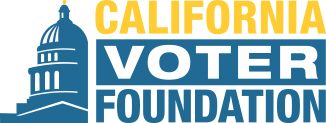Excerpts:
If you were looking for the best advice on how to spend the hours after the polls close on election night, here’s the best we have to offer: Go do something else.
Turn off your TV, close your computer, put away your phone. Now go for a walk. Bake a dessert with your family. Take up knitting. Pop a few melatonin and go to sleep early. Do anything but spend the remaining dark hours of Nov. 3 ping-ponging through the cable news channels, doom scrolling on Twitter and watching the New York Times’ dreaded needle (or CalMatters’ own California election results tracker) for any sign of what the will of the people will hold.
But you are not looking for the best advice on how to spend tonight. We know this because you’re reading an article called “A user’s guide to California’s election night results.”
So as you rake through the tea leaves of exit polls, cable news pronouncements and the earliest of actual results, here are a few tidbits of advice and context to keep in mind:
Be patient
An early blowout in Florida and up the Atlantic seaboard could bring the presidential race to a quick close before the polls have even closed in California. Or it could all come down to Pennsylvania — a state where ballot counting can’t begin until Election Day itself — in which case we might be waiting for days.
But even if the race at the top of the ticket is over, California’s fiercest congressional, legislative and ballot measure races will take some time to figure out. As a state, we should be used to the wait.
- - - - - - - - -
Regular election results watchers are used to government websites and some news outlets announcing that a certain number of precincts are reporting their results.
But that’s not a particularly useful metric in California. Especially not this year.
“In the olden days before we had more ballots cast by mail than in person, election night was a matter of ballots literally coming from voting sites,” explained Kim Alexander, president of the nonprofit California Voter Foundation.
Even in a normal election in California those results come with a big, fat asterisk. When most ballots are cast by mail, the precinct may not have “reported” any of its ballots yet, because the workers at that voting site have yet to deliver them to the county headquarters. But ballots cast by mail from within that precinct will have already been counted.
Likewise, even if a precinct has “reported” all of their ballots, “that doesn’t mean that 100% of the ballots have been counted yet,” said Chris Miller, spokesperson for the Secretary of State’s office. “They might still literally be running the ballots through the scanners.”
In short, if you’re trying to get a read on how many ballots are left to be counted by looking at “precincts reported,” don’t.
What you can look to instead is the number of ballots that each county says it has left to count. These are rough estimates. Registrars often use scales or tape measures to guestimate how many votes are left in their stacks of unprocessed ballots.
But those estimates won’t be issued until two or three days after Election Day. And they don’t include any ballots that were postmarked on or before Nov. 3, but which have been caught in postal limbo. Thanks to a new state law, counties will have another 17 days to count those.
So buckle up. And in the meantime, maybe go for a walk. (Full Story)

